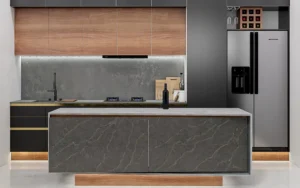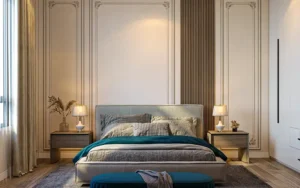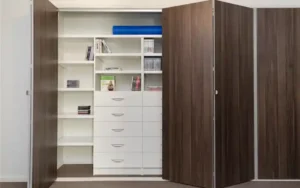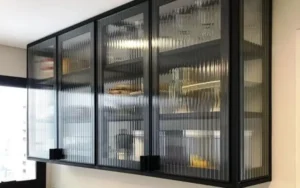BWR Plywood: Advanced Engineering Meets Moisture Resistance in Modern Construction
In This Post. All about BWR Plywood.
- BWR Plywood?
- Common Names.
- Manufacturing Process.
- Primary Applications.
- Advantages.
- Limitations.
- Recommendations
BWR Plywood
Boiling Water Resistant (BWR) plywood represents a remarkable achievement in engineered wood technology, standing as a testament to modern manufacturing innovation. This specialized material has revolutionized construction and interior design approaches in moisture-prone environments.
Unlike conventional plywood, BWR plywood incorporates advanced resin technology and sophisticated manufacturing processes to create a product that maintains its integrity even under extreme moisture conditions.
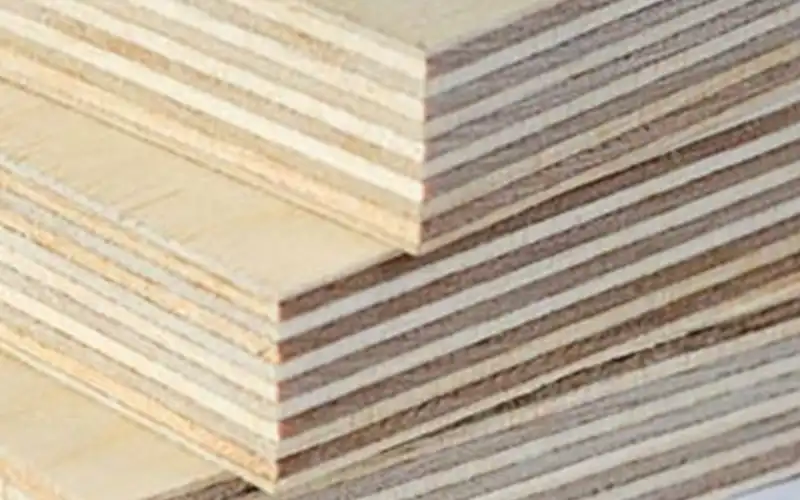
The development of BWR plywood emerged from the construction industry’s long-standing challenge with moisture-related deterioration in traditional wood products. This innovative solution has become increasingly crucial in contemporary architecture and interior design, where the boundaries between indoor and outdoor spaces continue to blur, and moisture resistance becomes paramount in ensuring structural longevity and aesthetic durability.
Blockboard Common Trade Names and Grades
The market offers several designations for BWR plywood, each highlighting specific aspects of its properties or applications:
- BWR Plywood – The standard technical designation
- Boiling Water Resistant Plywood – The comprehensive descriptive name
- Phenol-Bonded Plywood – Emphasizing its unique adhesive technology
- High-Moisture Plywood – Focusing on its performance characteristics
- Enhanced Water-Resistant Plywood – Describing its functional properties
- Marine-Grade Interior Plywood – Often used in high-end applications
- Type II Plywood – Technical classification in some markets
- Weather-Shield Plywood – Commercial designation in certain regions
- Moisture-Tech Plywood – Modern marketing terminology
- All-Weather Interior Grade – Application-specific designation
The Science of BWR Plywood Manufacturing
The production of BWR plywood represents a masterful integration of material science and engineering principles. The process begins with the careful selection of wood veneers, typically sourced from sustainable forestry operations that prioritize both environmental responsibility and wood quality. These veneers undergo rigorous assessment for density, grain pattern, and structural integrity before entering the production line.
The core innovation in BWR plywood manufacturing lies in its sophisticated adhesive system. The phenol-formaldehyde resin used in bonding represents decades of chemical engineering advancement. This thermosetting polymer creates cross-linked molecular structures that form water-resistant bonds between wood layers.
The resin’s molecular architecture allows it to penetrate wood fibers deeply, creating permanent bonds that resist hydrolysis even under extreme conditions.
The manufacturing process involves precise control of multiple variables. Temperature regulation during pressing typically ranges between 140°C to 160°C (284°F to 320°F), with pressure maintained at 12-15 kg/cm². This combination of heat and pressure ensures optimal resin cure and veneer compression.
The pressing time, typically 6-8 minutes per millimeter of thickness, allows complete polymerization of the adhesive while preventing thermal degradation of the wood.
Modern BWR plywood production incorporates sophisticated quality control systems. Computer-controlled pressing operations ensure uniform pressure distribution, while automated monitoring systems track temperature profiles throughout the panel. This level of control results in consistent product quality and reliable performance characteristics.
Greenply Industries, Century Plyboards, Kitply Industries and Sarda Plywood Industries are the major BWR plywood manufactures in india
BWR plywood key Applications
BWR plywood’s applications extend far beyond basic moisture resistance, finding its place in increasingly sophisticated construction scenarios. In contemporary architecture, it serves as a crucial component in spaces where moisture exposure intersects with aesthetic demands.
In residential construction, BWR plywood excels in creating seamless transitions between indoor and outdoor living spaces. Modern homes often feature indoor-outdoor kitchens, covered patios, and transitional spaces where traditional materials would quickly deteriorate. BWR plywood provides the necessary durability while maintaining the refined appearance expected in high-end residential applications.
Commercial applications have expanded to include specialized environments such as:
Laboratory Environments: Where humidity control and chemical resistance are crucial.
Food Service Areas: Where steam, splashes, and cleaning protocols create challenging conditions for conventional materials.
Healthcare Facilities: Where strict hygiene requirements demand materials that resist moisture while maintaining structural integrity under frequent cleaning.
Hospitality Spaces: Including spa areas, pool facilities, and moisture-prone amenity spaces.
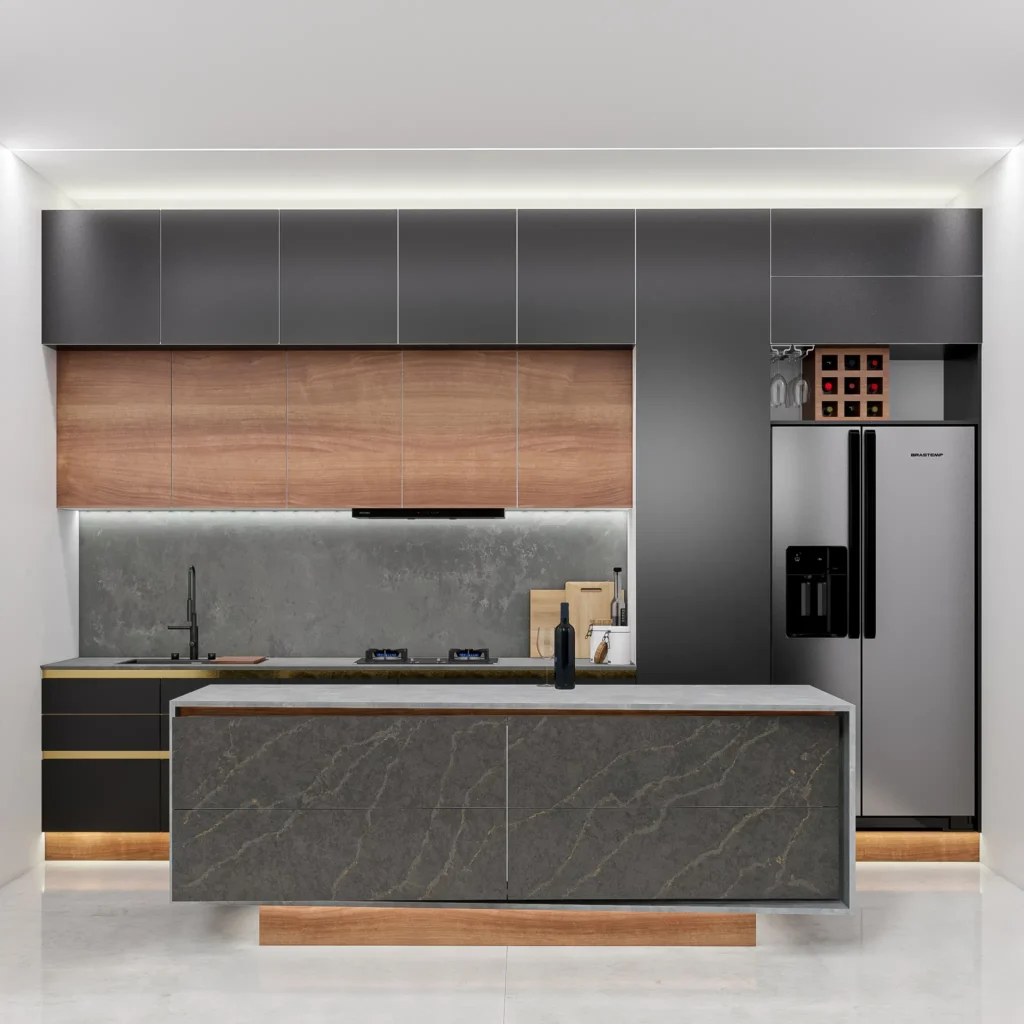
Design Your Dream Interior: Explore Our Modular Interior Design Services
Launch Your Modular Interior Journey with Align Designs: Find the Best Plywood and Hardware Fittings in Our Curated List.
✔️Free 3D Designs
✔️Color selection
✔️45 Days Deliver
✔️15 years Guarantee
BWR plywood Advantages
BWR plywood’s performance capabilities extend well beyond simple moisture resistance. The material exhibits exceptional dimensional stability under varying environmental conditions. Testing demonstrates less than 5% thickness swelling after 24-hour water immersion, compared to 15-20% for standard plywood.
Structural performance under load remains consistent even in high-humidity environments. The cross-laminated construction, enhanced by phenolic resin bonds, maintains its load-bearing capacity with minimal deflection. Laboratory testing shows retention of up to 80% of dry strength properties even after prolonged exposure to moisture.
The material’s resistance to fungal growth and biological degradation represents another crucial advantage. The phenolic resin system creates an environment inhospitable to common wood-destroying organisms, significantly extending service life in challenging environments.
Understanding Limitations of BWR plywood
While BWR plywood offers superior moisture resistance, understanding its limitations ensures appropriate application. The material’s water resistance, while exceptional, has definitive limits. Extended submersion or continuous exposure to standing water can eventually compromise its integrity.
Cost considerations play a significant role in project planning. The advanced manufacturing process and superior materials result in prices typically 30-40% higher than standard plywood. However, this premium often represents value when considering the reduced maintenance and replacement costs over the material’s lifetime.
Interior Design Applications and Recommendations
For optimal utilization in interior design, consider these application-specific recommendations:
Kitchen Environments
- Ideal for cabinet carcasses and drawer boxes
- Perfect for backsplash substrates
- Excellent for under-sink installations
- Recommended for pantry systems
Bathroom Applications
- Superior choice for vanity construction
- Ideal for shower surrounds
- Perfect for built-in storage units
- Excellent for ceiling applications in high-humidity areas
Utility Spaces
- Optimal for laundry room cabinets
- Perfect for mudroom storage systems
- Ideal for basement finishing projects
- Excellent for mechanical room enclosures
Expert Implementation Guidelines
Professional installation and maintenance of BWR plywood requires attention to several critical factors:
Edge Protection: All exposed edges should receive multiple coats of edge sealer specifically formulated for high-moisture environments. This includes not only visible edges but also cuts made during installation.
Fastener Selection: Use corrosion-resistant fasteners exclusively. Stainless steel or hot-dipped galvanized fasteners prevent potential interaction between moisture and metal components.
Surface Treatment: While BWR plywood offers excellent moisture resistance, additional surface protection through appropriate sealers or finishes can further enhance performance.
Installation Gaps: Maintain appropriate expansion gaps, typically 1/8 inch per 4 feet of panel dimension, to accommodate minimal movement under extreme conditions.

